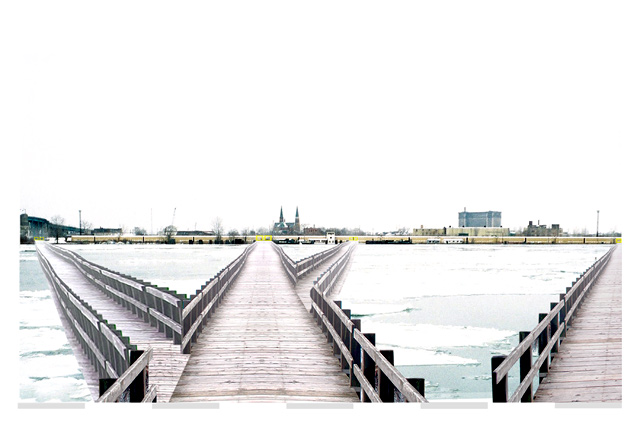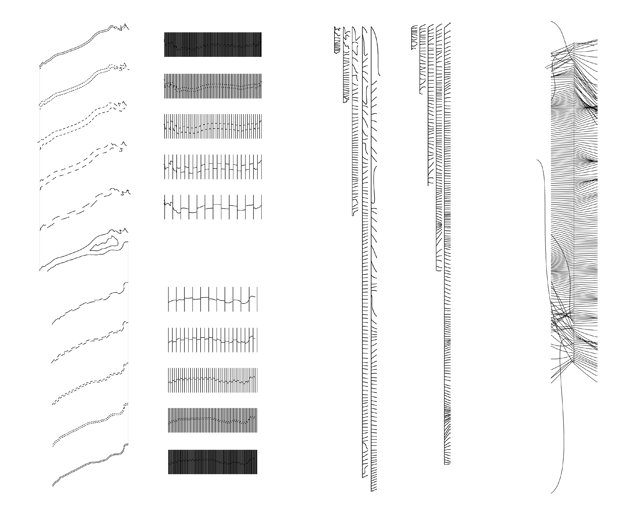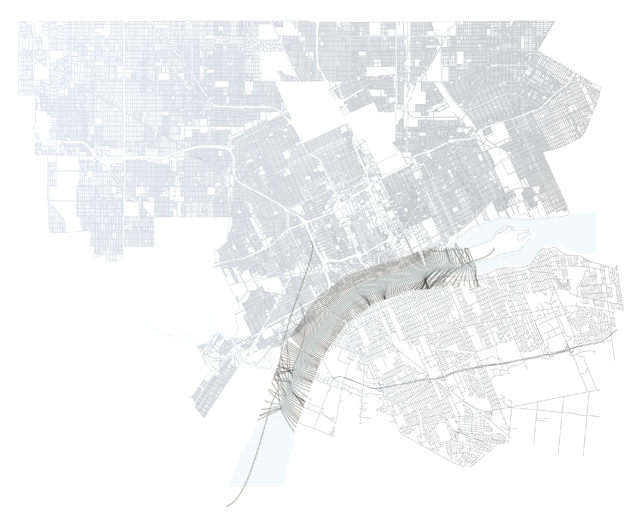Following up on our How to Forget the Border Completely project from last year, collaborator Tom Provost continues to work on ideas around pedestrian border crossings (which you can read all about in the HFBC book!)
Photos and text by Tom Provost
In the summer of 2011, I was in dialogue with Broken City Lab about the idea of forgetting the border… completely! We thought about what could be done at the architectural scale to overcome the enormous divide between Windsor and Detroit. We thought about the possibility of prioritizing pedestrians over industry. We also considered what kind of architectonic could close the gap between the super-human-scale and the individual – a post-industrial dilemma easily visible from the river’s edge. The result was 707PX.
707PX is a speculative project engaging the border cities of Windsor and Detroit in a new entanglement. The geopolitical division acts as an indicator only, a naïve datum. The architecture examines the surreal condition of complete pedestrian dominance with form as an end goal of the process. Ultimately, it is the process that dominates to form a surreal pedestrian condition along the river. The concept became physical after pursuing the connection of past, present, and future incarnations of the river. It began with a map from 1796 that was meticulously traced along both edges, reifying what has now been striated. These new edges were examined as a whole and then as a part. By repeatedly scaling and the slicing them into multiple sections, it quickly revealed an allegiance to an old-world geographic division native to its very own history – the French ribbon farm. The ribbon farms are noticeable on the map from 1796 as they indicate human presence. They are cordoned off plots, extending narrowly and perpendicular to the river. By alluding back to this system, the architecture can interfere with the modern schema at the human scale.
The multiple collections of river’s edge sections are then distributed evenly on their respective sides, in sequential order. The sequence creates tactility close to rippling, with a rhythm clearly visible on both sides. With the border as a datum, both sides dialogue and seesaw at various moments, creating subito and crescendo. The finale occurs when the sequence, thought of as attached to a string, is lifted and becomes conformed to the unique, precise, and mathematical geopolitical division. It should be noted that the 1796 map omits division. The river appears as a singular moving force between bodies of and is left graphically plain. The form of 707PX reifies the singularity of the river by adjoining both cities and entertaining a pedestrian agenda. This investigation answers the question of how one is to forget the border while simultaneously subverting its presence.




I’m glad he kept working with this idea. Those renderings are fantastic also.